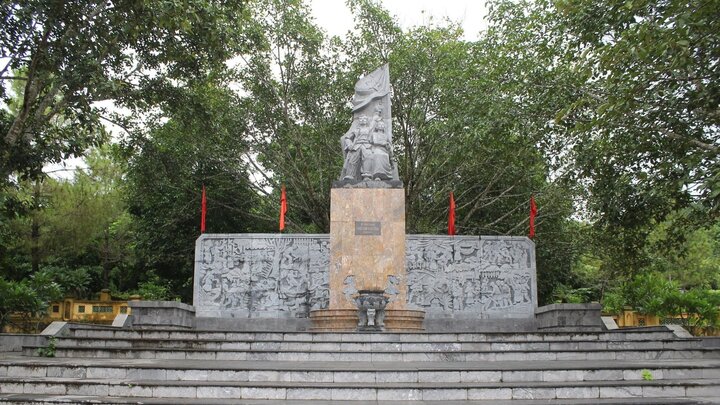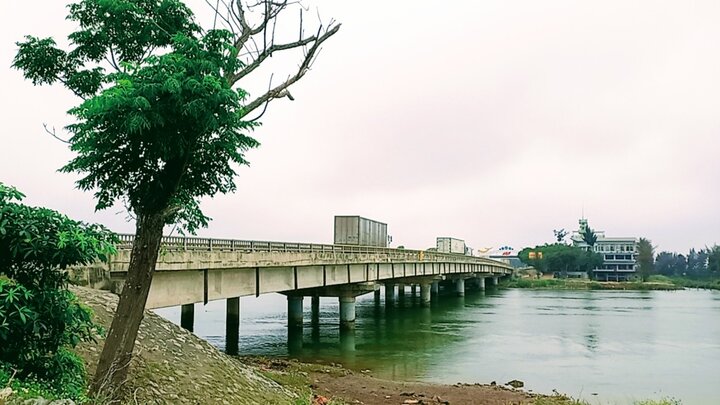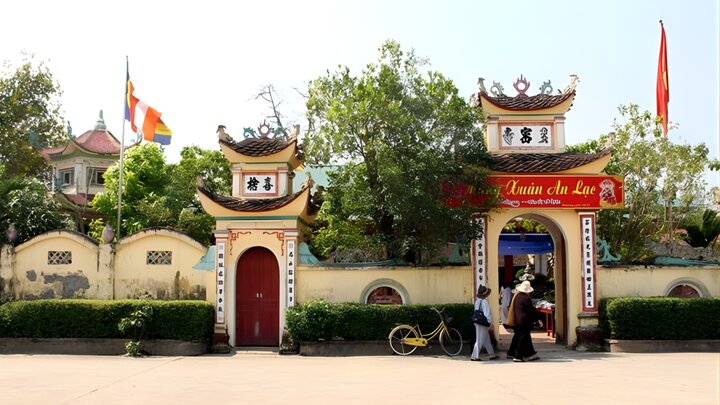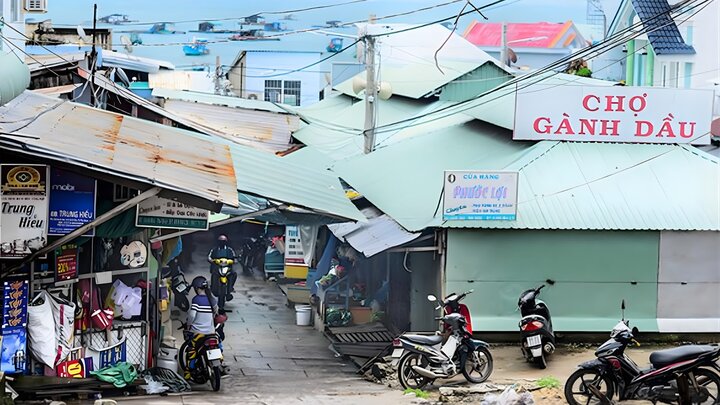1 Overview of Dong Co Temple
1.1 Where is Dong Co Temple located?
Located in Dan Ne village, Yen Tho commune, Quy Loc commune, Dong Co Temple is situated at the foot of Tam Thai mountain, beside the gentle Ma River. This location offers a harmonious natural landscape between mountains and river, making it a peaceful place, separate from the hustle and bustle of daily life.
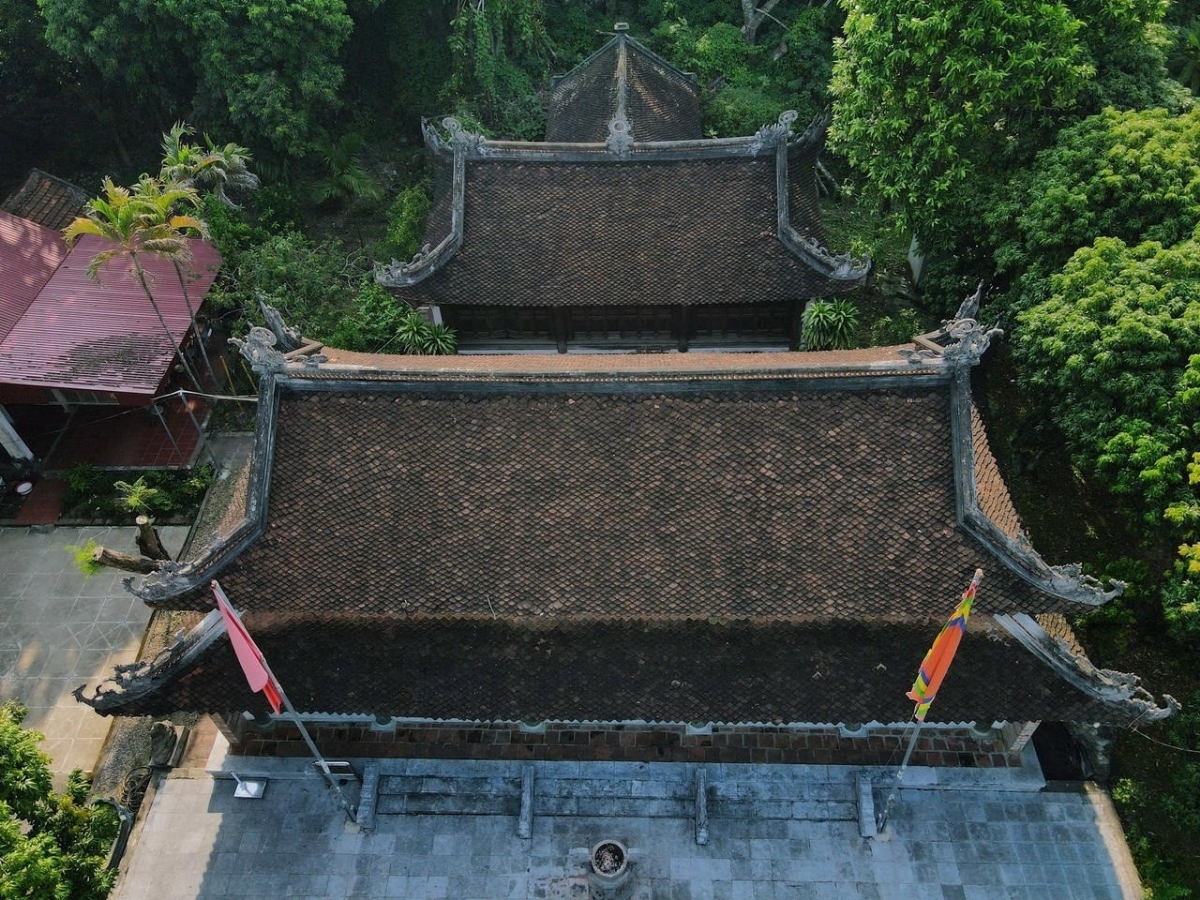
View of Dong Co Temple from above. (Source: Collected)
Dong Co Temple is known as one of the most ancient and sacred temples in the Thanh region, and it is the only place in Vietnam that fully preserves the custom of worshipping the Dong Co deity. This deity is associated with the legend of the bronze drum, a symbol of the loyalty, integrity, and righteousness of the Vietnamese nation. The worship of the Dong Co deity reflects the tradition of solidarity, the spirit of righteousness, and the will to protect the country of the Vietnamese people throughout many historical periods.
1.2 History of Dong Co Temple's Establishment
Legend has it that when King Hung led his troops to suppress the southern invaders, the large army reached the foot of Mount Kha Lao and stopped to rest in this area. During the night, the king dreamed that the mountain spirit appeared and advised him: to dig up a bronze drum and bronze drumstick to take into battle. When engaging in battle, the sound of the bronze drum echoed through the mountains and rivers, causing the enemy troops to panic and disintegrate.
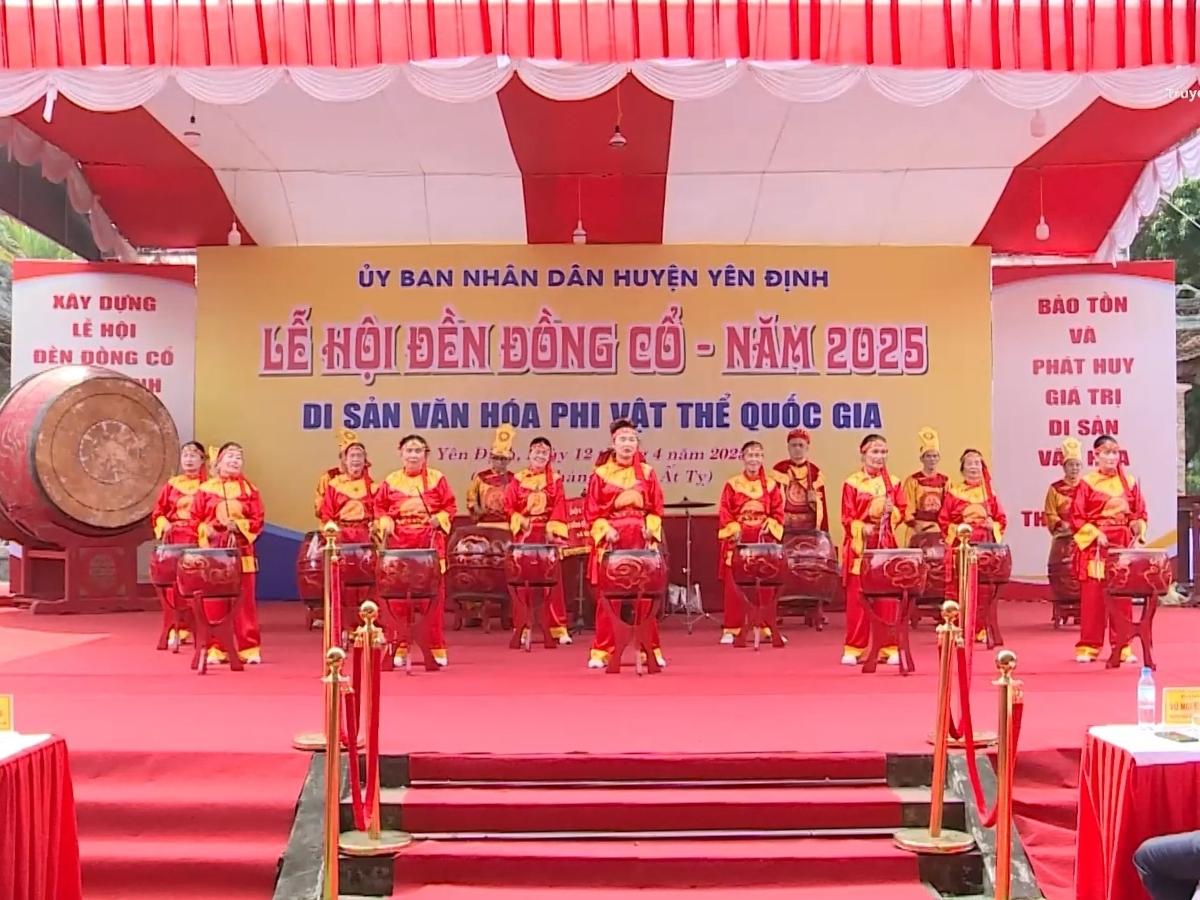
Opening ceremony of the Dong Co Temple festival 2025. (Source: Collected)
After the victory, King Hung and his generals returned to Nui Kha Lao mountain to perform a thanksgiving ceremony and conferred upon the mountain deity the title 'Dong Co Dai Vuong', and ordered the construction of a temple to worship him, to commemorate the merits of the deity who manifested to help the country. From then on, Dong Co Temple became a sacred symbol of loyalty, righteousness, and the spirit of protecting the nation and pacifying the people, revered and worshipped by people through many generations.
Through thousands of years of history, although repeatedly destroyed by war and time, Dong Co Temple has been restored and renovated, preserving its spiritual value and has become an indispensable part of the cultural and spiritual life of the people of Thanh Hoa. Annually, on the 14th and 15th days of the 3rd lunar month, the people of Dan Ne village solemnly organize the Ky Phuc Mountain and Dong Co Temple Festival, commemorating the deity who had the merit of 'protecting the people and the nation', and praying for national peace, popular well-being, and abundant harvests.
2 Ways to Travel and Experience the Journey
The temple is located in a place with picturesque natural scenery, about 40 km west of Thanh Hoa city center, following National Highway 45 towards the Northwest. If traveling along the Song Ma river, the temple is about 47 km from Cau Ham Rong bridge. Together with famous relics such as Lam Kinh and Thanh Nha Ho, Dong Co Temple contributes to creating a unique complex of historical and cultural relics, carrying the long-standing traditions of the Thanh Hoa region.

Entrance gate to Dong Co Temple. (Source: Collected)
From Thanh Hoa city center, visitors can choose to travel by car or motorbike . The road is paved and smooth, convenient for travel. The scenery here unfolds a picture of nature blending between Tam Thai mountain and the gentle Ma river. Among them is the calm surface of Ban Nguyet lake reflecting green trees, the chirping of birds echoing in the quiet space. All this brings a sense of peace, tranquility, and is an ideal start for a pilgrimage to the spiritual land of Thanh Hoa.
3 Outstanding experiences at Dong Co Temple
3.1 Structures and relics
Dong Co Temple, Dan Ne village, has a history of formation and development over thousands of years. From a small shrine, this place was gradually expanded and became a magnificent spiritual structure with a "tien nhat - hau dinh" structure, consisting of 38 rooms and a three-tiered, eight-roofed gatehouse.
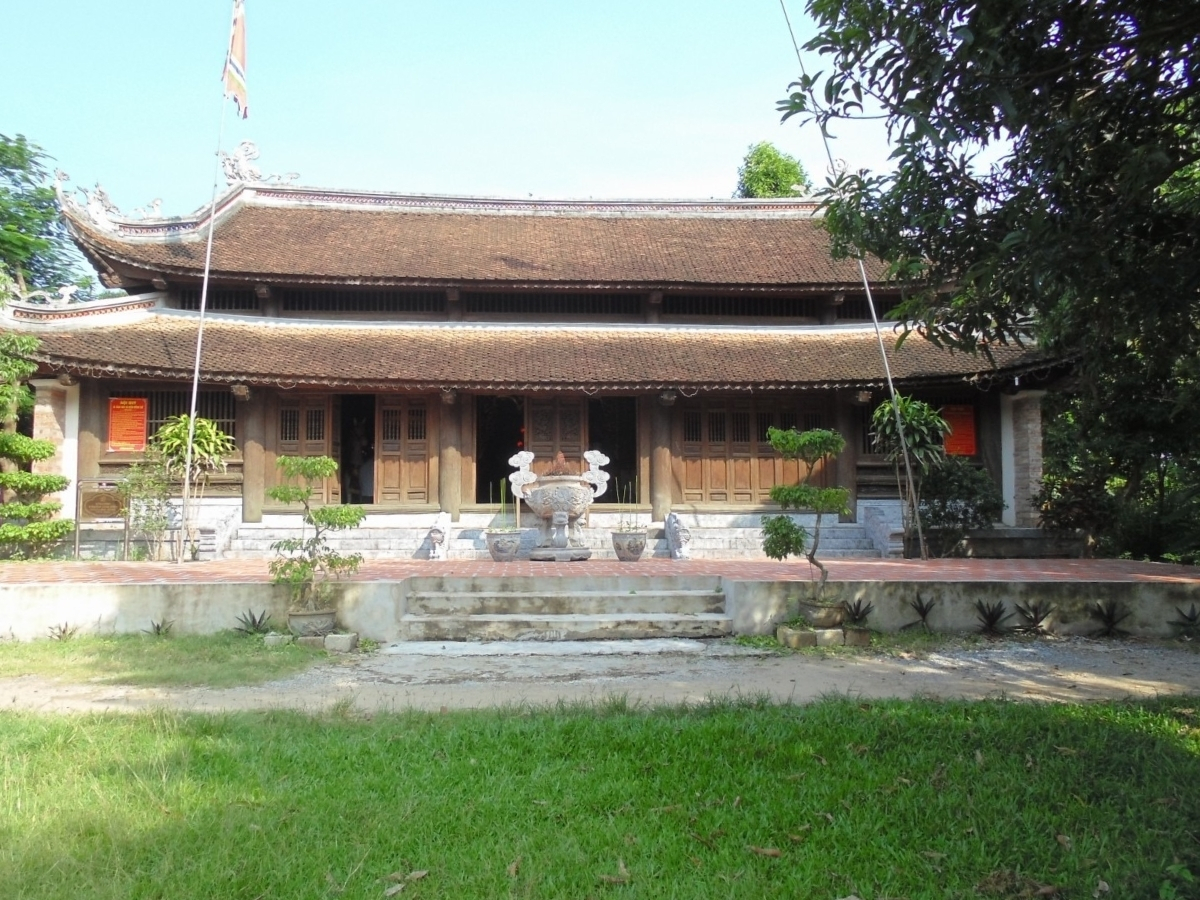
Scenery around Dong Co Temple. (Source: Collected)
The temple's architecture is characteristic of the Ly Dynasty, with a symmetrical and harmonious layout. The front hall has two stories, eight roofs, and five bays, housing an altar to the god Dong Co. Behind it is the Upper Sanctuary, with three bays and three altars dedicated to the god Dong Co and heroes who contributed to the cause of national defense. The rear sanctuary is located at the very back, designed to be neat, ancient, and solemn.
Having undergone many restorations and renovations, Dong Co Temple today still retains its solemn beauty and many ancient architectural values. The gracefully curved tiled roofs, the system of intricately carved ironwood pillars, and classic patterns all showcase the talent of ancient artisans. The picturesque landscape, between Tam Thai Mountain and the Ma River, blends with the sacred space, creating a sense of purity and reverence for every visitor who sets foot here.
3.2 Dong Co Temple and its historical value
Not only is it a unique architectural work, but Dong Co Temple also carries significant historical and cultural value as it is the venue for the Dong Co Temple Festival held annually on the 15th day of the 3rd lunar month. The festival features many lively activities, attracting a large number of people and tourists, such as: palanquin processions, ceremonial offerings, boat races, human chess, blindfolded duck catching... This is an occasion to honor the merits of the god Dong Co, a sacred deity revered for his contributions to 'protecting the people and the nation'.

Dong Co Temple Festival with many cultural and historical activities. (Source: Collected)
The area of Dong Co Temple, Dan Ne village, still bears the mark of many typical historical events during the nation's two long resistance wars against the French colonialists and the American imperialists. During the resistance war against the French, Ich Minh cave, located within Tam Thai mountain, was once an arms production workshop of our army. When discovered by the enemy, this place was destroyed by bombing, leaving only foundations and the gate on the west side of the temple. In the period of resistance against the US, an electricity plant workshop was also evacuated to this area and operated in Noi cave, belonging to the mountain on the left side of the temple.
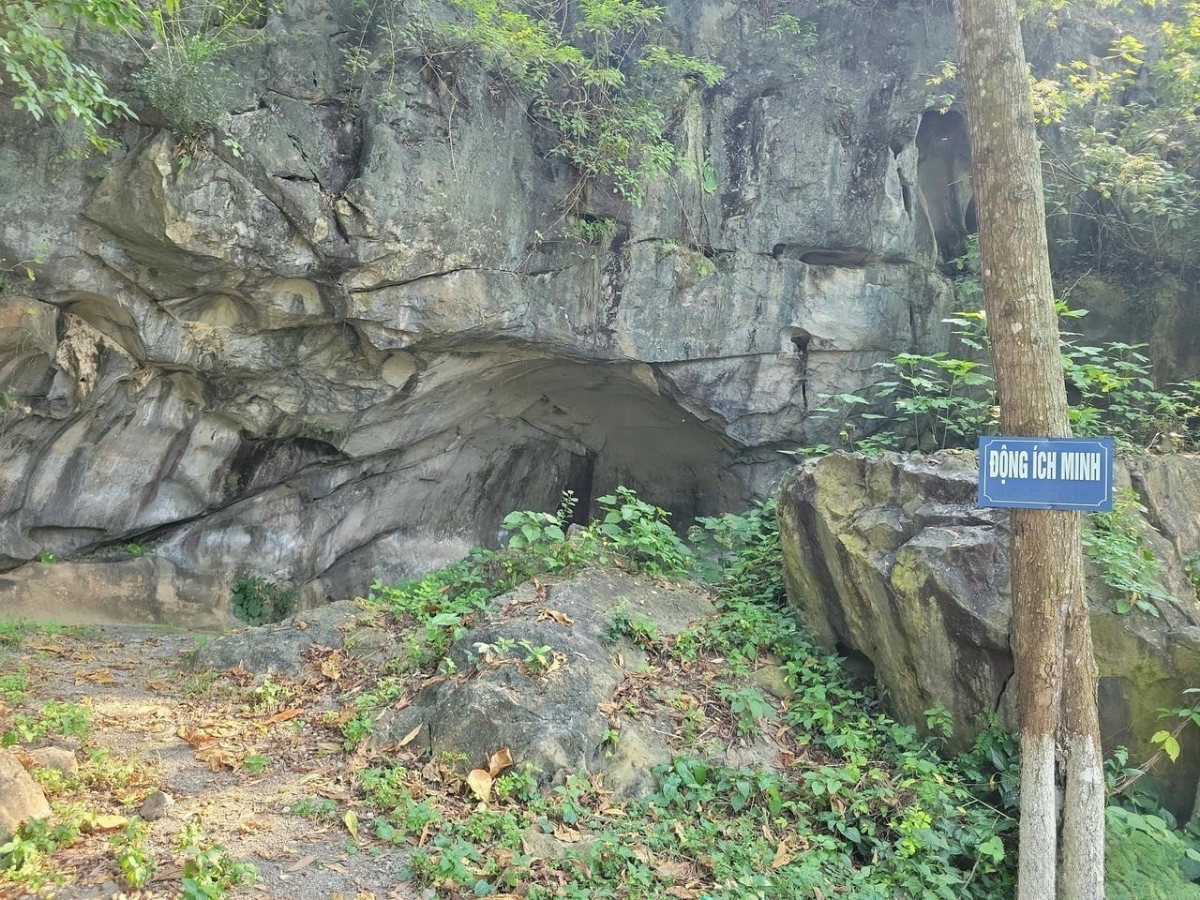
Dong Ich Minh cave was where our army used to produce weapons during the anti-French resistance. (Source: Collected)
Through many ups and downs, Dong Co Temple remains a sacred symbol of loyalty, patriotism, and pride for the people of Thanh Hoa. The temple's history blends with the nation's historical flow, becoming a special destination, preserving the sacred spirit of Vietnam's rivers and mountains.
4 Experiences and Notes
Before visiting Dong Co Temple, visitors should prepare thoroughly for a complete journey, showing reverence while fully enjoying the cultural and spiritual beauty of the place.
It is advisable to choose modest and polite attire suitable for the sacred space of the temple; prioritize long-sleeved shirts, long pants, and closed-toe shoes.
Avoid wearing short, revealing, or overly bright clothing to maintain solemnity and respect at the place of worship.
Bring a camera or phone with good photo quality to capture beautiful moments amidst the picturesque river and mountain scenery around the temple.
Time your visit for early morning or late afternoon to admire the ethereal beauty of the mist, the golden sunlight on the water, and the curved tiled roofs of the ancient temple.
Visit on the 15th day of the 3rd lunar month annually to immerse yourself in the Dong Co Temple festival, experience the bustling atmosphere with traditional rituals, folk games, and special artistic performances.
5 Combining Tourist Destinations in Thanh Hoa
5.1 Sam Son Beach
After visiting Dong Co Temple, visitors can continue their journey to explore Sam Son Beach. Sam Son Beach is always among the top most famous tourist destinations in Thanh Hoa, located about 16 km east of Thanh Hoa city center. Sam Son Beach is known as the "blue pearl" of the Central region with its fine white sand, clear blue water, and year-round gentle waves.
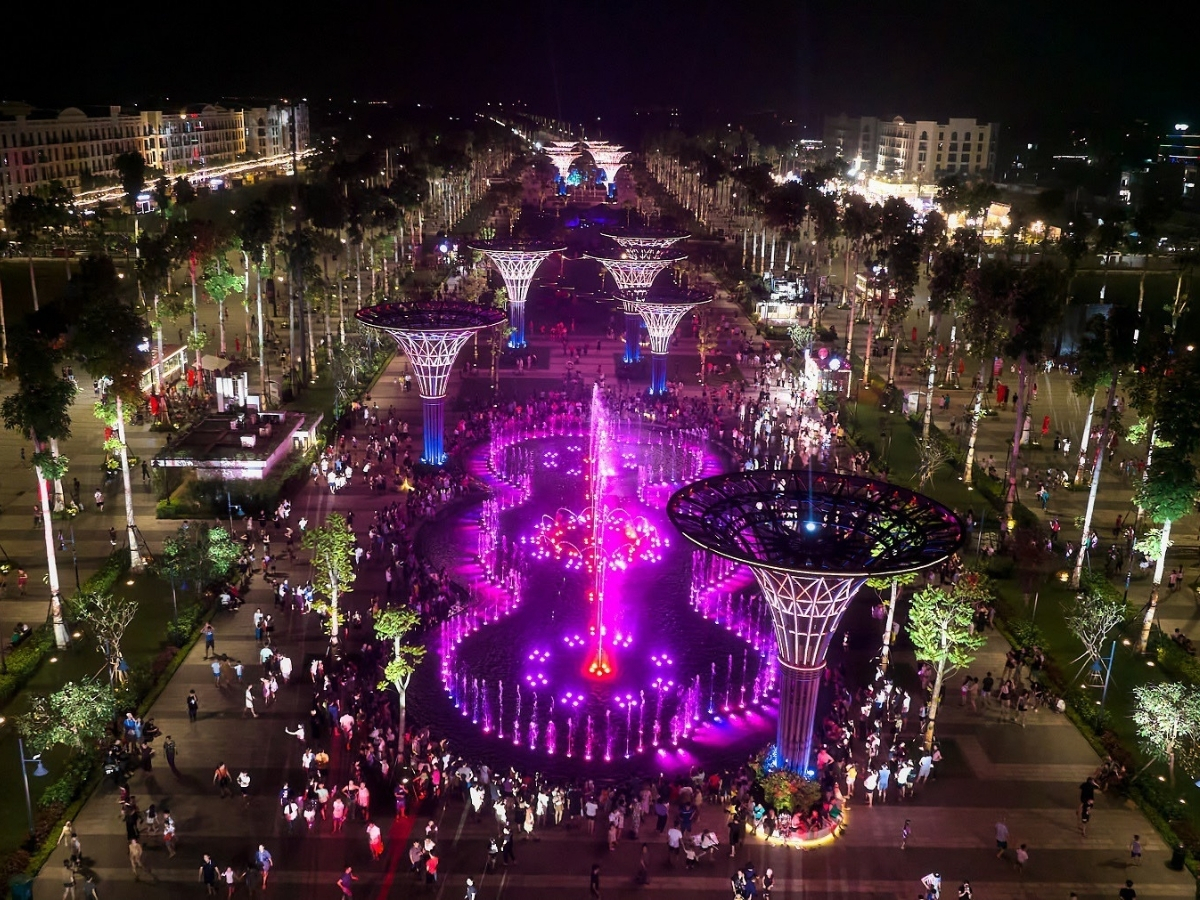
Sam Son Beach Square attracts a large number of visitors. (Source: Collected)
Not only attractive for its natural beauty, this place also boasts Sam Son Beach Square, an iconic structure of the coastal city. The square is designed to be modern and the largest in scale in the North Central region. This is where many attractive cultural events, festivals, music nights, and art activities take place, especially vibrant during the summer tourist season.
5.2 Cam Luong Sacred Fish Stream
Leaving behind the bustling life of the coastal city, the journey to explore Thanh Hoa will become more poetic when visitors visit the Cam Luong Sacred Fish Stream. The stream is located about 35 km northwest of Dong Co Temple. At the foot of Truong Sinh mountain, the small, clear stream is home to thousands of sacred fish, revered by the locals, considered as sacred creatures protecting the peace of the village.
What's special is that no matter how crowded it gets, the fish always gather here to reproduce. The legendary story of the sacred fish, along with the fresh natural scenery and the winding stream amidst the mountains and forests, makes this place a unique spiritual destination. Visitors to Cam Luong not only admire the beautiful scenery but also feel the tranquility and sacredness that envelops the stream's space.
5.3 Majestic May Waterfall in Thach Thanh
If you love wild beauty and want to immerse yourself in nature, May Waterfall in Thach Quynh commune is an unmissable choice. About 50 km from Dong Co Temple, May Waterfall is formed from a stream on the peak of Thach Lam mountain, cascading down through nine layers of white rocks, creating a majestic and poetic scene like a silver ribbon amidst the mountains and forests.

Cloud Waterfall (Thac May) is a must-visit destination in Thanh Hoa (xu Thanh). (Source: Collected)
Legend has it that this place is associated with the love story of 9 fairies who descended to earth to bathe, hence the people named it "Thac May" (Cloud Waterfall). The waterfall splashes white foam all year round, its babbling sound blending with the chirping of forest birds, making visitors feel lost in a picturesque landscape painting. Besides sightseeing, you can go trekking, take photos, or organize picnics at the foot of the waterfall. Thac May (Cloud Waterfall) is a top tourist destination in Thanh Hoa (Thanh Hoa) with fresh, cool air all year round.
Dong Co Temple (Den Dong Co) is not only a place preserving the ancient spiritual energy of the nation but also a bridge between the past and the present, bringing visitors back to the spiritual cultural roots of Thanh Hoa (xu Thanh). Visiting Dong Co Temple (Den Dong Co), tourists not only pay homage to a sacred relic but also feel the breath of history, the harmony between humans and nature. The journey to Dong Co Temple (Den Dong Co) is therefore not just a trip, but a profound spiritual experience, where each person finds peace and pride in the gentle and proud land of Thanh Hoa (xu Thanh).


